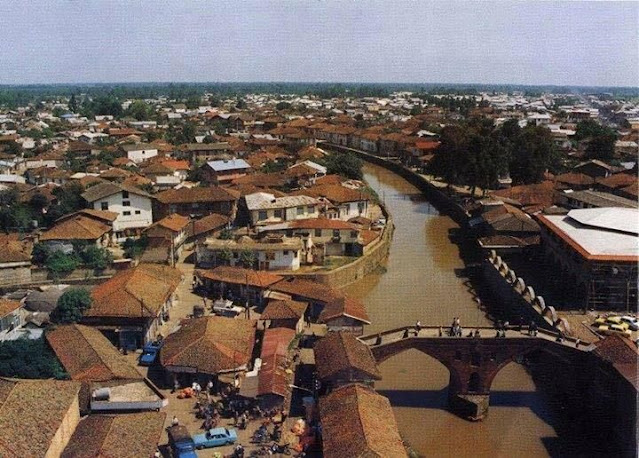Kheshti Bridge (پل خشتی) is an adobe bricks and mortar bridge located in Langerood, Gilan. It was the old route from Lahijan to Langerood and due to its strategic location is still heavily utilized by the locals. This bridge spans over the Langerood River which in turn is fed by Sepidrood. Kheshti Bidge is 37 meters long and has two arches supported by thick pillars and on average is about 10 meters above the river’s surface.
The Bridge consists of one flat middle section with two sloped side sections. The middle section spans 15 meters while each of the sloped parts are 11 meters long. The width of the Bridge is a little over 4 meters wide. The Bridge consists of two arches, tall and wide enough for each of them to allow the passing of a ship (although by today’s standards it may be a tight fit). The middle column of the Bridge, in between the two arches, spans 4 meters across and on both sides of the bridge are two wave-breakers to ease the pressure on the Bridge during rainy periods. Up the walls of its column are two window-like depressions. The arches are each adorned by a row of bricks along their perimeter 12 centimeters wide. The bridge has a small passageway and window (sandwiched between the two window-like depressions) completely passing through its middle column.
There is some ambiguity regarding its age. Some believe it was built by Haj Agha Bozorg Monajem Bashi during the reign of Fath Ali Shah Qajar. Others point out that up until the late 14th century only wooden bridges were utilized in Langerood and thus this bridge must have been constructed during the Timurid dynasty. Yet others consider it the work of the Ilkhanate or Safavid dynasty.
In 2007, in an effort to enhance Kheshti Bridge’s attraction for locals and tourists, renovations were carried out. As a result of this $120,000 project, lighting of the Bridge was greatly improved, thus adding to its already existing allure.






.jpg)
.jpg)
.jpg)
.jpg)
.jpg)
.jpg)
.jpg)
.jpg)
